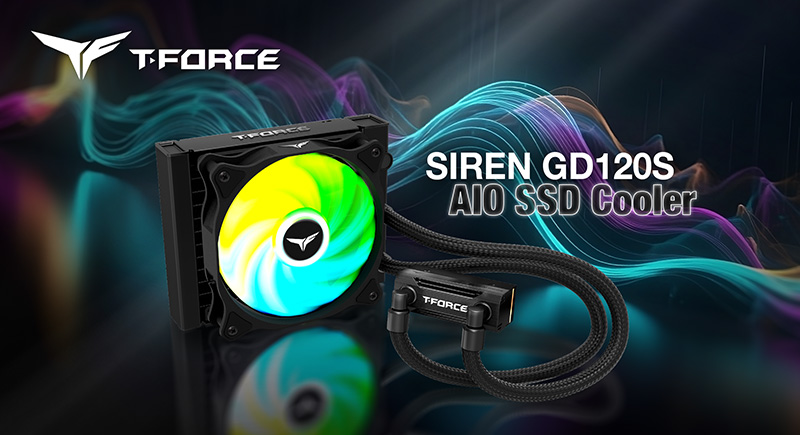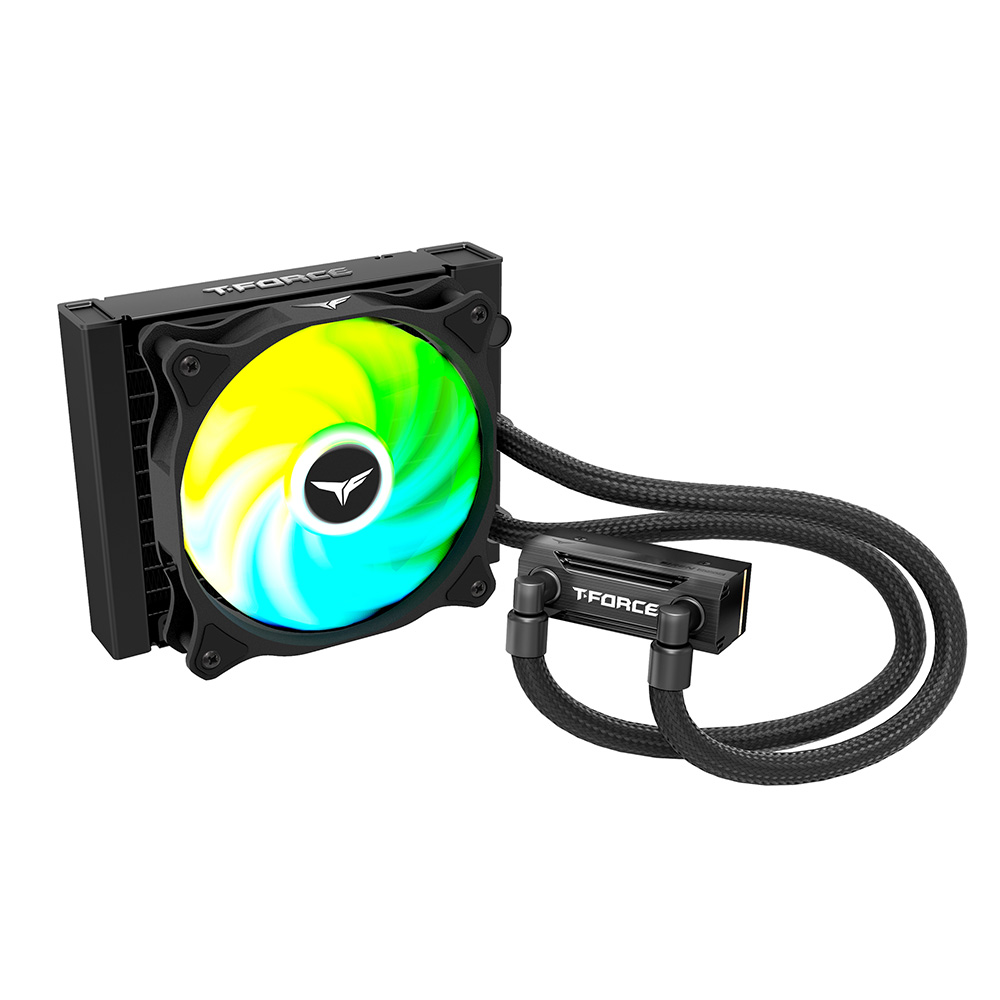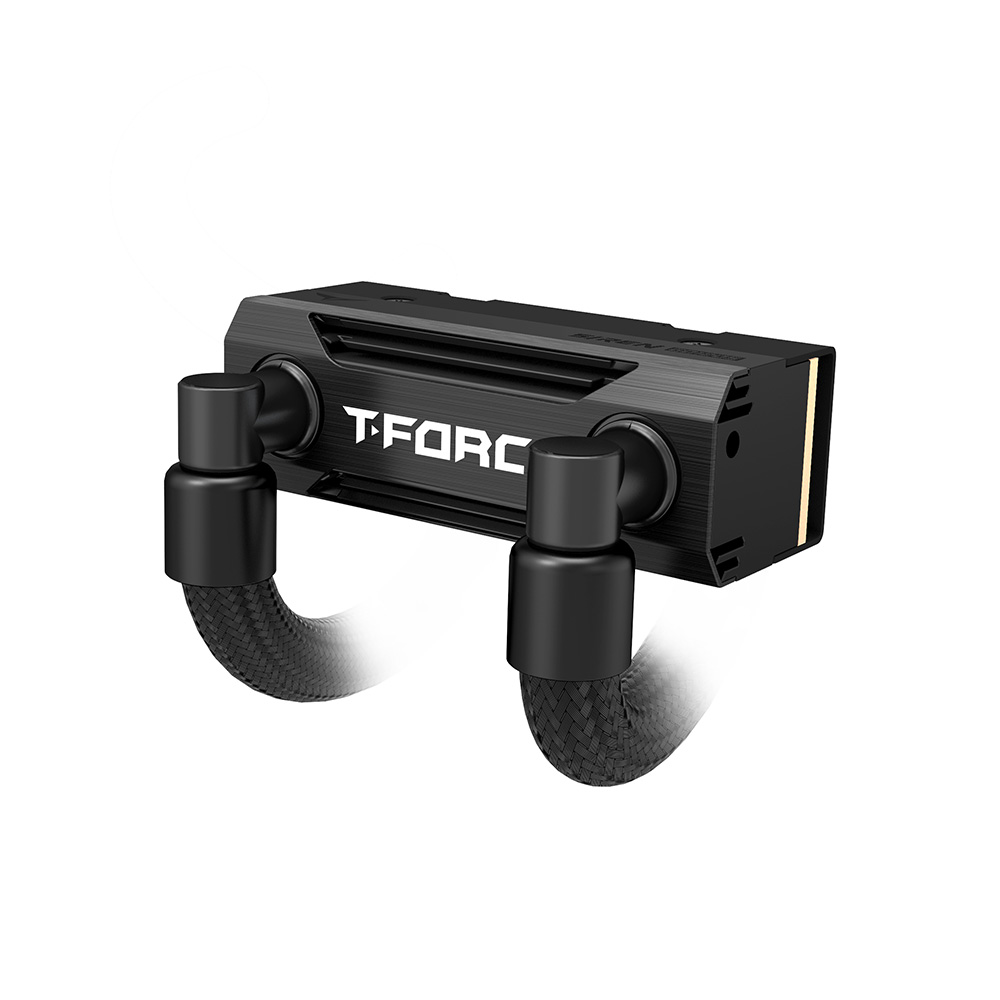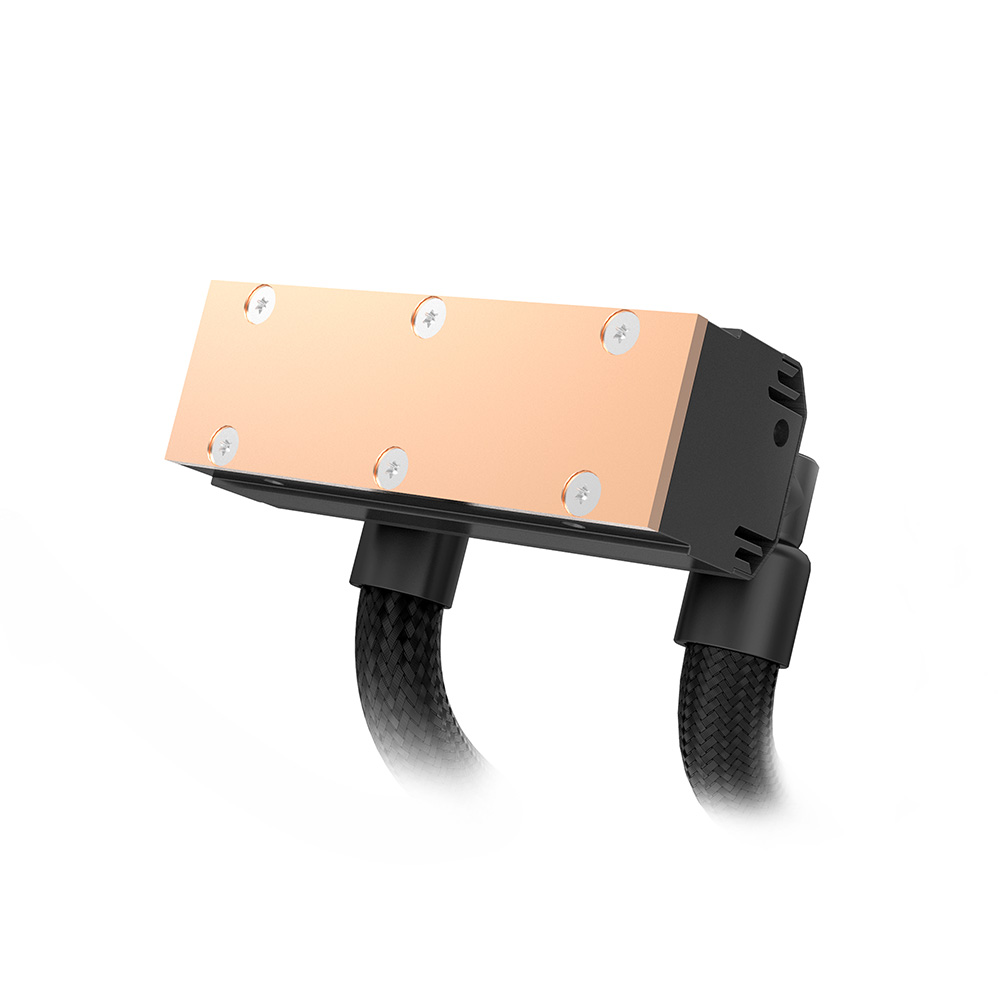
To provide high-performing and optimal cooling for the latest SSDs, TeamGroup has launched an all-in-one closed-loop liquid cooler for 2280 form factor PCIe 5 NVMe drives. The T-Force Siren GD120S AIO Cooler is made for PCIe 5 SSDs, as current-gen options tend to run hot, hindering performance. Like liquid cooling options for CPU and graphics cards, similar options for M.2 SSDs should provide cooler operation and address performance throttling.
The GD120S uses a dedicated aluminum alloy double tube water block, double-layered thermal pads, and a copper plate paired with a 120 mm radiator using 13 high-density aluminum fins. The backplate secures the other other side of the PCB, which is then firmly securely on the waterblock via screws. Firm contact on both ends should enable the liquid cooler to dissipate heat effectively. It is bundled with a 120mm 4-pin ARGB fan. The complete specs are as follows:



The cooler comes bundled with an ARGB splitter and is backed with a three-year warranty. At the time of writing, the GD120S is only available as an all-black liquid cooler.
Do We Even Need This?
While this cooler may seem amusing as M.2 is meant to be low-profile, high-performing storage, the current-gen PCIe 5.0 controller's heat generation and performance throttling are nagging issues.
We've tested the TeamGroup T-Force Siren Duo 360 AIO cooler, which covers both the CPU and an SSD. We tested with the Teamgroup Z540 PCIe 5 SSD, which uses the Phison E26 controller that many other PCIe 5.0 SSD makers use. According to our review, it yields 30% better cooling performance than a basic NVMe heatspreader while providing the highest measured IOPs during the torture test.
There are plenty of less-exotic options to cool your SSD, though. There are passive air heat spreaders of different sizes; some even use heatpipes and a fan or two. These should be suitable for the overwhelming majority of use cases, and most users with an AIO for SSD cooling do so merely for the aesthetics.
This may be seen as a solution for those with existing cooling setups or those who want a separate liquid cooling unit for the M.2 SSD. It also addresses the issue with the Duo 360's clearance, which largely depends on the motherboard layout. It does so by having the pipes routed through the top of the waterblock rather than from its side. Of course, we'll only know about its performance when we test it. Not surprisingly, it doesn't have RGB on the top of the water block, something that those who don't like RGB in everything would appreciate, as the fans can be swapped for a non-RGB version.
TeamGroup says the cooler will be available on Amazon in North America at the end of December, but it hasn't revealed the MSRP at the time of writing.







